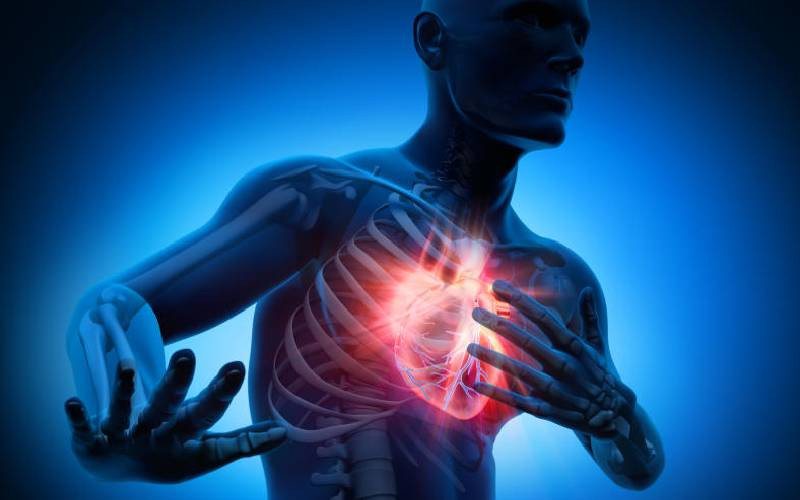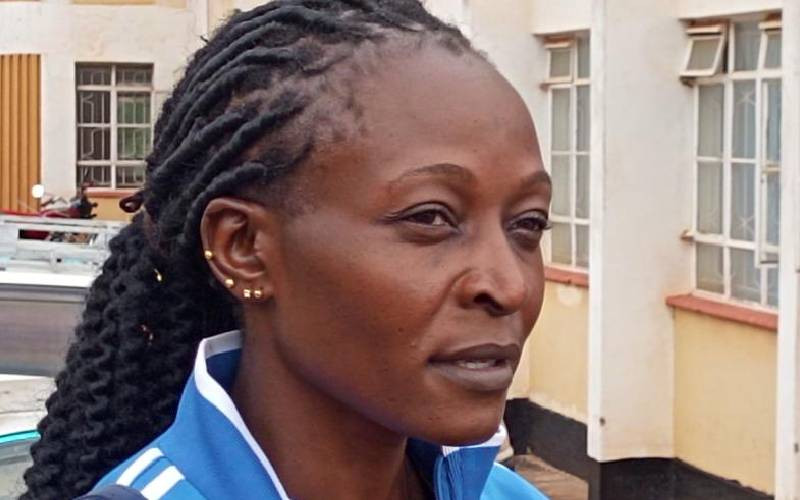Dr Jeilan Mohamed is an Interventional Cardiologist and Head of Cardiology at AKUH,N
Is it true that you can fix something wrong in the heart by inserting a wire through the groin? How is this even possible?
This is true. The heart is part of the cardiovascular system with all parts of the body connected to it. You need to get to the left side of the heart by introducing a tube into the artery in which you feed the equipment (a wire) that is followed to the heart. Once the wire is positioned where the heart is, a cardiologist can give suitable treatment.
What are the likely risks of getting to the heart through the groin? Can the wire miss and poke something else? Any long-term side effects?
The wire may cause a small trauma to the blood vessels or the heart. The cardiologist needs to be careful while doing the procedure and should use quality technology to ensure the wire is in the correct place.
The risk of damage is less than 0.1 per cent and the long-term effects depend on the procedure. It is just like a road that has potholes that if not repaired well will still be a problem when it rains. The same thing applies to a heart problem. It has to be fixed well to prevent the problem recurring.
What kind of heart diseases can be fixed with this form of intervention? Which heart diseases require surgery?
Certain patients with electrical problems with the heart can use such interventional techniques and if it is not possible, then the patient will need surgery. Also, there are some heart valve problems that are better treated with a valve surgeon than an interventional cardiologist. Very complicated heart defects will need surgery. Apart from these, there are certain complex heart blockages that need open operations with small multiple keyhole intervention.
How often, in Kenya, do you see people who need your kind of specialisation?
Kenya has fewer people with heart diseases who require interventional procedures compared with western Europe. But since the technology to diagnose is not common, many people have diseases that are not detected. If you don’t have an ECG machine, then you can’t detect the problem. We do not know the exact numbers because the government does not have this technology to figure out who has the disease and who doesn’t. The number of cases is rising, and it is predicted that cardiovascular disease will kill more people in Kenya by 2030 than any other condition.
Compared to global figures, how are we doing as a country?
At the moment the number of people with heart disease is rising in Africa faster than in any other part of the world. Heart disease is number two or number three in Kenya. Worldwide, it is the leading cause of death and kills about 15 times as many people as Covid-19 every month.
I came to Kenya in 2012 and there were only two of us at Aga Khan, and we used to operate about 15 patients a month. Currently, there are five interventional cardiologists at Aga Khan and I do between 40 and 60 operations in a month.
From your experience, who (in terms of age, sex, race) gets heart attacks and needs such intervention? Is it only older people?
Heart attack does not apply to older people only, the youngest patient I treated in the UK before coming to Kenya was 21. When I came to Kenya in 2012, I had a 25-year-old and a 27-year-old at some point. Children have been my patients, but it is more common in older people and slightly more in women. Half of the people that I treat are women.
Stay informed. Subscribe to our newsletter
You mean children get heart attacks?
It’s unusual. Children aged below 18 are rarely prone to heart attacks, though I have only treated two since I started my practice in 2002. Heart attacks can be caused by the cholesterol that slowly builds up in the arteries, which takes a long time. It may start to build when one is a teenager due to certain activities teenagers are involved in, but it may not really be severe at that stage.
Can heart disease in children also be addressed by interventional cardiology? What kind of diseases are we talking about, if any?
Yes, heart disease in children can be addressed by this. Many young children are born with a small hole in the heart, which is a communication between two chambers in the organ. An interventional cardiologist will deliver a small plug, which will open naturally once released to close the hole. People of many ages are now being treated with these, which we call closure devices.
If a pregnant woman gets a heart attack and needs you to fix it, is it possible? What would be the risks to the life of the mother and that of the child?
The risk of a heart attack is that one out of two people dies before they make it to hospital. The only way to save the baby is to save the mum. There is a small risk of X-ray, but we have ways of protecting the unborn baby from radiation. We also do the procedure from the wrist and not the groin to avoid the abdomen.
How else can heart attacks be addressed, if not through interventional cardiology?
If you compare all these, heart attack occurs because of a blood clot that forms inside the blood vessels of the heart at the point of narrowing, which completely blocks the vessel. We use the interventional technique to remove the clot and open up the narrowing. The first step of this procedure, which is offered in places outside Nairobi and Mombasa, is to use a ‘clot-burster’ (thrombolysis) which breaks up the clot. Unfortunately, less than 10 per cent of government hospitals have this drug.
Which procedures have the best survival chances?
The best way is through interventional techniques, which save more lives, even after one is given a ‘clot-bursting’ medicine. Half of the people will have about 15 minutes to have the attack sorted out and the other half will have at most six hours because sometimes there are alternative blood vessels in the part of the heart with an attack, buying one time to seek help.
The six hours is the limit for treatment. The ‘clot-burster’ will start working in about 30 minutes and the clot will take two to three hours. With intervention in a cath-lab, we can do it within 60 minutes from the time one walks into the hospital.
Once you feel heaviness in the middle of the chest or pain in either arm associated with sweating and difficulty in breathing, you might be getting a heart attack. Don’t waste time.
Are all hospitals in Kenya able to provide these services?
Kenya has eight hospitals that offer these specialised services. Only two of them are public hospitals - the Kenyatta National Hospital and the soon to be opened one at Coast General Hospital (CGH). Opening CGH will bring the number to nine.
This is a global problem and Kenya needs to train its experts to offer such services at home. Equipment is needed first so that the experts - from doctors, nurses and medical engineers among others - can be trained around it.
These must be expensive procedures. Does insurance cover such?
Yes, insurance does cover management of heart attacks. It is better to seek this treatment locally because the doctors in Kenya will give you better care considering that they have a reputation to keep. Hospitals in some of the popular destinations abroad may over-treat or use substandard equipment recycled from one patient to the next.
Kenya has not given heart disease much attention. We are way behind yet it will kill more Kenyans.
 The Standard Group Plc is a
multi-media organization with investments in media platforms spanning newspaper
print operations, television, radio broadcasting, digital and online services. The
Standard Group is recognized as a leading multi-media house in Kenya with a key
influence in matters of national and international interest.
The Standard Group Plc is a
multi-media organization with investments in media platforms spanning newspaper
print operations, television, radio broadcasting, digital and online services. The
Standard Group is recognized as a leading multi-media house in Kenya with a key
influence in matters of national and international interest.
 The Standard Group Plc is a
multi-media organization with investments in media platforms spanning newspaper
print operations, television, radio broadcasting, digital and online services. The
Standard Group is recognized as a leading multi-media house in Kenya with a key
influence in matters of national and international interest.
The Standard Group Plc is a
multi-media organization with investments in media platforms spanning newspaper
print operations, television, radio broadcasting, digital and online services. The
Standard Group is recognized as a leading multi-media house in Kenya with a key
influence in matters of national and international interest.





